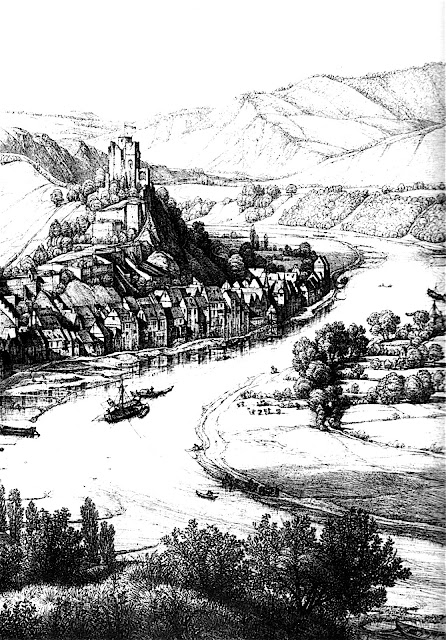According the Ernst Mettlach who grew up in the Trier region, each village in the Trier and Saarburg areas had apple trees. He says, "Trier is Appleland." The apple trees in past days were part of the meadow land called the "
Streuobstwiese" It was similar to our English word "orchard" But these orchards were also pasture/meadow lands, serving a dual purpose.
Thus all over the regions apple trees stood (and other fruit trees like plum and pear trees) with very high, knotty tree trunks. In our own modern times, trees are pruned to grown low and have very short trunks so it is easier to harvest their fruit. But because of this, very little light reaches the ground and almost no vegetation grows beneath these trees as it did in the olden times. The
Streuobstwiesen-orchards, with tall-trunk trees, gave space to a lot of species. Animals and plants sheltered beneath the trees and took advantage of the meadow land that surrounded there. Ernst painted an excellent word picture when he said that these trees had a ground floor which was used by the cattle as pasture, while the upper floor produced fruit and gave a home to several kinds of birds and small animals, such as Little Owls (
Athene noctua).
Ernst took the pictures below in Aach, 10 km north of Trier and known as the Mecca for the regional hard cider known as
Viez. So he shows us the "Roter Trier Weinapfel" and the "Weisser Trierer Weinapfel." These apples are used to make Viez. They are small, hard and very sour. They are sometimes called "
Holzapfel" (wood apple) or "Roter/Weisser Trierer" or simply "Viezapfel." There is also a picture of a very traditional pear tree called "
Sievenicher Mostbirne." These pear trees are very huge and have broad crowns.
All the trees shown below produce fruit that is not very edible when plucked from the branches. But they are fine to produce Viez or distilled spirits.
 |
| Roter Trier Apple Tree |
 |
| Roter Trier Apples |
 |
| Weiser Trierer Apple Tree |
 |
| Weiser Trierer Apples |
 |
| Weiser Trierer Apples with Mistletoe |
 |
| The Two-Story Red and White Trier Apple Trees |
 |
| Sievenicher Mostbirne (Pear Tree) |
 |
| Viez Krug |



















































